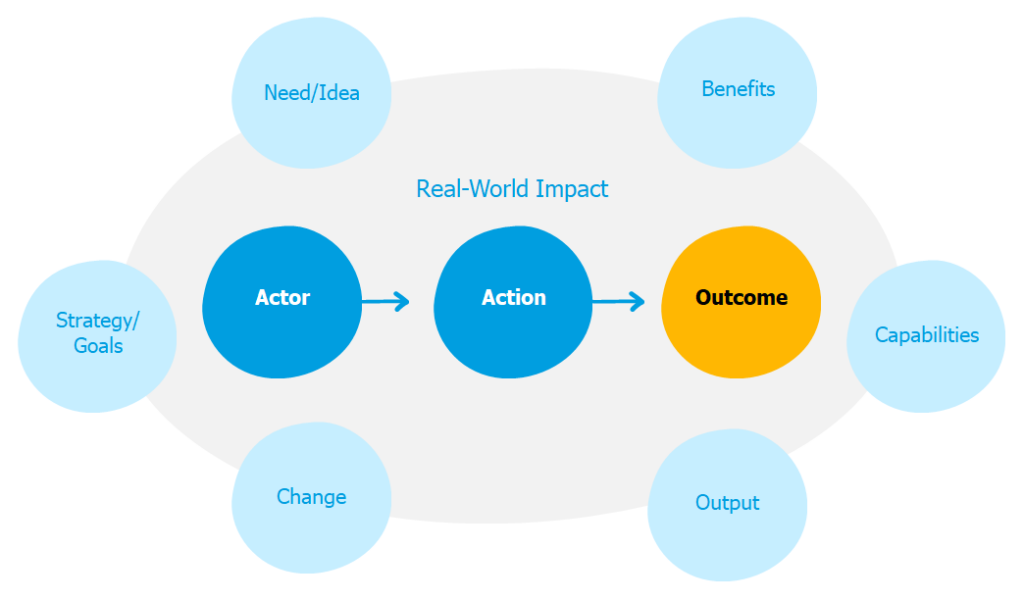Measure Value by Measuring User Behavior-EN

Alfred Maeso Aztarain
- Business Agility, Change Management
- Article
Here’s the situation: you’re working on developing a product or service, and know for sure that it has to add value. But what does value mean? How do you know if you’re contributing it? And, surely the most important question is: who do you need to create value for?
Value is a very subjective concept that is based on users’ perception of the benefits a product or service brings them in relation to the costs, complexity, or difficulty of obtaining it.
That’s why, because we’re talking about people’s perceptions, you need to analyze and understand how you expect people to act with your product or service. It’s important not to forget too that each person is different, and value means different things to different people.
But if I am the user of a product, what brings me value is the extent that I incorporate the product into my life and use it, and whether I can achieve my goals through using it. In other words, how much value it adds for me is proportionate to how much my behaviors change.

Thinking, identifying, designing, and measuring your product based on the behavioral changes you expect to occur is a way to put people at the center and make the delivered value tangible.
Start by Understanding the Outcome
When building a product or service, inside or outside your organization, you must start with the end in mind. You need to think about the effect and impact that you want to achieve. What is the change you want to bring about in the real world? This what we call the outcome.
Think Actors and Actions
Secondly, the result is achieved when you manage to change the behavior of your users (actors). If you look at behaviors, value becomes tangible and concrete. Therefore, you need to think about which actors will make the outcome real, what actions they need to take, and what behaviors they must adopt to accomplish it. Examples of an actor’s behavior changes could be:
- Using the product
- Incorporating it into their “way of doing things”
- Recommending it to family and friends
Next, think about what features (requirements) your product or service should have to influence those actions on the actors. The Impact Mapping technique can help you break down outcome, actors, and actions into requirements.

When you think about this, keep in mind that behavioral changes must occur in two phases:
1. Behavior of Engaging with Your Product
How are you going to let users know that your product exists and inspire them to want to use it? Who could be the early adopters and how can you reach them? How are you going to work within their environment to ensure that there is awareness of, interest in, and desire to use the product?
2. Desired Behaviors When Using Your Product
Once someone uses your product, what should happen? What actions would lead a user to achieve the desired outcome? Bear in mind that some of those actions may have to happen outside the product. What are they, how do you plan to influence them to occur, and how do we measure the external factors? Examples of behaviors “outside the product” are:
- Users searching for a solution to their problem
- Users comparing different product options
- Referrals on social media or forums
Ways to measure these actions can include A/B testing, focus groups, benchmarking, and experimentation.
Learn with Data and Experimentation
Finally, we are in a world that is increasingly complex and uncertain, it is difficult to anticipate behaviors and it is even more difficult to establish helpful relationships. In this sense, you must rely on empirical learning (from experience) with two major focuses: data and experimentation.
Start with data.
Use an analytical approach to establish the questions that data needs to help us solve (Am I solving this user’s need? How can I improve engagement?), identify the data sources, and define how data should be analyzed, interpreted, visualized, and measured to provide you with information that ultimately serves as a basis for decision-making.

From there, experiment.
Apply a Lean Startup mindset, organize work based on cycles of building, measuring, and learning, based on validating assumptions and solving uncertainties through experimentation. Find out what works and what doesn’t. Find out how to get the outcome through users’ actions even if the way to get to it is not what you thought at first. Adapt the concept of MVP, minimum viable product, and achieve the MVA, minimum viable action. What is the minimum effort you can make to validate or disprove your hypotheses? The goal is to maximize learning quickly to build the product on solid foundations, ensuring that it will give your users the expected value.
For more, I recommend taking a look at the following books:
- Designing for Behavior Change: More on how to design based on the behavior change we want to generate from our users.
- Agile Change Management: More on how to plan based on outcome from an agile approach.
- IIBA’s Guide to Business Data Analytics: More on how to improve data-based decision-making.
AND (my favorite learning tools), these Netmind courses:
In quick summary, seek to understand the impact you want to have, put the focus on the behaviors you want to generate in your users, and learn empirically through data measurement and experimentation.
Gracias,
— Alfred

Is your data measured for change?
We have several courses to help you meet these goals:
